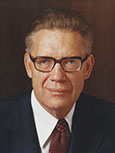Introduction
Jesus rebuked the Pharisees for their false traditions. He then compassionately healed a child possessed by a devil, as well as a man who was deaf and had a speech impediment. He fed four thousand people near the Sea of Galilee and traveled to Bethsaida, where He healed a blind man in stages.
Suggestions for Teaching
Mark 7
Jesus reproves the Pharisees, heals a child possessed by a devil, and heals a deaf man
Before class, give three students the following instructions. Student 1: “When directed to do so, walk around the class without a coat and pretend to be shivering.” Student 2: “When directed to do so, go around the room and ask if anyone has seen your family’s lost pet.” Student 3: “When directed to do so, unzip your backpack so that items might fall out when you walk.” (You could adapt this activity by using other situations that show students in need, but be careful not to use too much time.)
When class begins, direct the students to complete these instructions one at a time. Ask the class to look for what these three situations have in common.
- • What do these situations have in common? (Each of these situations represents someone who is in need.)
- • How often do we have opportunities to help others in need? What are some opportunities you have seen lately?
Encourage students as they study Mark 7–8 to look for what the Savior teaches us to do when we notice someone in need.
Summarize Mark 7:1–30 by explaining that the Savior rebuked the Pharisees for following incorrect traditions. He also healed a Greek woman’s daughter, who was possessed by a devil. Remind students that at this time, the Savior’s mission was to the house of Israel, not the Gentiles, yet He compassionately helped this Gentile woman who importuned Him.
Invite students to locate the cities of Tyre and Sidon and the Sea of Galilee on Bible Maps, no. 11, “The Holy Land in New Testament Times.” Explain that after the Savior left Tyre and Sidon, He traveled to the east side of the Sea of Galilee, to the region of Decapolis.
Divide students into pairs. Invite them to read Mark 7:31–37 aloud together, looking for how the Savior showed compassion to a man in Decapolis. After sufficient time, ask students to discuss the following questions with their partners:
- • What conditions did this man seek to be healed of?
- • What did the Savior do before He healed the man?
To help students understand the Savior’s actions, invite a student to read aloud the following statement by Elder Bruce R. McConkie of the Quorum of the Twelve Apostles:

“The Lord is dealing with a believing soul who cannot hear his words or give fluent answer to them. And so what is more natural than to make use of common signs, known to and understood by the deaf and speech inhibited man, to indicate what the Master could and would do … ?” (Doctrinal New Testament Commentary, 3 vols. [1965–73], 1:373).
- • What can the Savior’s actions in this situation teach us about His character?
Explain that despite the Savior’s warning to those He healed to not publish His miracles, people in the Decapolis region still heard about the wonderful things the Savior had done, and great multitudes gathered to Him (see Mark 7:36–37).
Mark 8:1–21
Jesus feeds more than four thousand people
Invite students to respond to the following question in their class notebooks or scripture study journals:
- • When has someone noticed that you needed help and did something to help you?
Explain that later in the lesson students who would like to share their experiences will have an opportunity to do so.
Invite a student to read Mark 8:1–3 aloud. Ask students to follow along and look for the problem that arose because of the multitude that followed Jesus.
- • What problem arose for the multitude? Who perceived the multitude’s need?
- • What did the Savior worry might happen if the people tried to return to their homes without eating first?
- • According to verse 2, how did the Savior feel toward the multitude? (You may want to suggest that students mark the phrase “I have compassion on the multitude,” which indicates the Savior felt sympathy and concern for the people.)
Invite two students to take turns reading aloud from Mark 8:4–9. Ask the class to follow along, looking for what resulted from the Savior’s compassion.
- • What did the Savior do for the multitude?
- • How many people were fed?
- • What can we learn from the Savior’s example in this account? (Help students identify the following principle: We can follow the Savior’s example by perceiving the needs of others and then helping to fulfill those needs. Write this principle on the board.)
To help students understand this principle, explain that Sister Linda K. Burton, Relief Society general president, taught that in order to follow the Savior’s example in serving God’s children, we need to “first observe, then serve” (“First Observe, Then Serve,” Ensign or Liahona,Nov. 2012, 78). Write this phrase on the board under the principle.
- • How can we learn to be more observant of others’ needs? (Consider pointing out that some needs may not be immediately apparent. However, we can pray and ask for help in noticing the needs of others and focus our thoughts on others rather than ourselves.)
- • What can get in the way of our ability to notice others’ needs and help fulfill them?
Invite a few students to share the experiences they wrote down about a time when someone noticed they were in need and provided help.
Invite a student to read aloud the following statement by President Thomas S. Monson:

“How many times has your heart been touched as you have witnessed the need of another? How often have you intended to be the one to help? And yet how often has day-to-day living interfered and you’ve left it for others to help, feeling that ‘oh, surely someone will take care of that need.’
“We become so caught up in the busyness of our lives. Were we to step back, however, and take a good look at what we’re doing, we may find that we have immersed ourselves in the ‘thick of thin things.’ In other words, too often we spend most of our time taking care of the things which do not really matter much at all in the grand scheme of things, neglecting those more important causes” (“What Have I Done for Someone Today?” Ensign or Liahona, Nov. 2009, 85).
Ask students to picture in their minds the events of a typical day for them. Invite them to think about people they encounter who may need their help, such as parents, siblings, and peers. Encourage students to commit to follow the Savior’s example by offering help when they recognize someone in need.
Summarize Mark 8:10–21 by explaining that after miraculously feeding the 4,000, Jesus and His disciples sailed to a place called Dalmanutha. There the Pharisees asked Him to show them a sign. Jesus refused and taught His disciples to beware of the doctrine of the Pharisees, which doctrine resulted in spiritual blindness.
Mark 8:22–26
Jesus gradually heals a blind man
Explain that Jesus and His disciples left the area of Decapolis and came to a place called Bethsaida. When they arrived there, a blind man was brought to the Savior to be healed.
Invite several students to take turns reading aloud from Mark 8:22–26. Ask the class to follow along, looking for how the Savior healed the blind man.
- • What happened after the first time the Savior put His hands on the blind man? (You may need to explain that the phrase, “I see men as trees, walking” [verse 24] indicates that the blind man could see, but not clearly.)
- • What happened after the Savior put His hands on the man the second time?
Provide students with copies of the following statement by Elder Bruce R. McConkie of the Quorum of the Twelve Apostles, and invite a student to read it aloud. Encourage students to follow along, looking for reasons why Jesus may have healed the man gradually, or in stages.

“This miracle is unique; it is the only recorded instance in which Jesus healed a person by stages. It may be that our Lord followed this course to strengthen the weak but growing faith of the blind man. It would appear that the successive instances of physical contact with Jesus had the effect of adding hope, assurance, and faith to the sightless one. Jesus personally (1) led the blind man by the hand out of the town, (2) applied his own saliva to the eyes of the sightless one, (3) performed the ordinance of laying on of hands, and (4) put his hands a second time upon the man’s eyes.
“Certainly the manner in which this healing took place teaches that men should seek the Lord’s healing grace with all their strength and faith, though such is sufficient for a partial cure only, following the receipt of which, however, they may then gain the added assurance and faith to be made whole and well every whit. Men also are often healed of their spiritual maladies by degrees, step by step as they get their lives in harmony with the plans and purposes of Deity” (Doctrinal New Testament Commentary, 1:379–80).
- • How might being healed gradually increase someone’s faith in Jesus Christ?
- • Why is it important to understand that some blessings, such as gaining a testimony of the gospel or receiving physical or spiritual healing, often come gradually or in stages, rather than immediately or all at once?
Mark 8:27–38
Peter testifies that Jesus is the Christ
Invite a student to read Mark 8:27 aloud. Ask the class to follow along and look for the question the Savior asked His disciples. Invite students to report what they find. Ask the class to recall how Peter responded to this question, as recorded in Matthew 16:16 (this verse is part of a scripture mastery passage). If they cannot remember, invite a student to read Mark 8:29 aloud (this verse includes Peter’s response).
Summarize Mark 8:30–38 by explaining that the Savior told His disciples to not yet make public His identity as the Christ, or Messiah. He also began teaching them about His impending suffering and death.
Conclude the lesson by inviting students to testify of the truths they learned from the scriptures they studied during the lesson.
Commentary and Background Information
Mark 7:11. What is “Corban”?
Elder Bruce R. McConkie of the Quorum of the Twelve Apostles explained the meaning of “Corban” and why the Savior condemned the way the Pharisees and scribes used this practice:
“This is the picture Jesus is painting: Parents, perhaps aged and decrepit, are hungry, naked, and homeless. … But they have children—children who are prosperous and well to do. … Surely there is enough for all and to spare. But no, the children say: ‘It is corban.’ That is: ‘We have vowed it to sacred purposes. You, our parents, may go cold and hungry and homeless; our property is not available to help you. We have a great zeal toward the Lord, and our property is vowed to him; and we cannot break our vows.’
“Or: ‘It is corban; I have vowed that my property shall be as if it were dedicated to sacred purposes, and though I may continue to use it all my life, you shall have none of it because of my vow.’
“‘… It is more important that I keep my vow than that I fulfill my obligation to support my parents. The oral traditions of the elders take precedence over the divine law written by Moses.’
“It seems difficult to believe that religion could sink to such depths, and that a people who professed to serve the Jehovah of their fathers could so easily clear their consciences and feel themselves free from keeping his law. Already Jesus has called them hypocrites and said their worship is in vain” (The Mortal Messiah, 4 vols. [1979–81], 2:407–8).
Mark 8:1–9. “I have compassion on the multitude”
President Thomas S. Monson taught about acting to assist others:
“The needs of others are ever present, and each of us can do something to help someone. …
“My brothers and sisters, we are surrounded by those in need of our attention, our encouragement, our support, our comfort, our kindness—be they family members, friends, acquaintances, or strangers. We are the Lord’s hands here upon the earth, with the mandate to serve and to lift His children. He is dependent upon each of us” (“What Have I Done for Someone Today?”Ensign or Liahona, Nov. 2009, 85, 86).
Supplemental Teaching Ideas
Mark 8:1–9. Perceiving and helping to fulfill others’ needs
To help students understand the principle that we can follow the Savior’s example by perceiving the needs of others and then helping to fulfill those needs, invite a student to read aloud the following statement by Sister Linda K. Burton, Relief Society general president. Ask students to listen for how the young woman in this story applied this principle:
“An inspired young woman named Alexandria noticed that her cousin Madison was unable to complete her own Personal Progress requirements because she suffered from severe autism. Alexandria rallied the young women in her ward, counseled with her leaders, and determined to do something for Maddy that she could not do herself. Each of the young women completed a portion of the Personal Progress activities and projects vicariously to enable Maddy to receive her own medallion” (“First Observe, Then Serve,” Ensign or Liahona, Nov. 2012, 79).
- • How did Alexandria follow the example of the Savior?
- • Why do you think Alexandria was able to recognize an opportunity to help someone in need?
Mark 8:22–26. Blessings from the Savior can come to us gradually or in stages
After students discuss what happened after the Savior put His hands on the blind man the second time, ask:
- • From the example of how the Savior healed the blind man, what can we learn about how blessings sometimes come to us? (Students may identify a variety of truths, but make sure it is clear that blessings from the Savior can come to us gradually or in stages. Write this principle on the board.)
- • What might be some benefits of receiving some blessings gradually or in stages, rather than immediately or all at once?
To help students understand one way this truth can relate to them, invite them to imagine that a friend who is a member of the Church confides to them that he is not certain that the Church is true. He believes he has a testimony of some aspects of the gospel, but he is unsure about others. Divide students into pairs, and ask them to discuss with their partners how they would respond to this friend. Encourage them to consider how they might use the account in Mark 8:22–26 and the principle on the board to help this friend.
After sufficient time, invite the partnerships to report what they discussed to the class. Then ask:
- • Why do you think receiving the Savior’s blessings gradually can increase someone’s faith in Jesus Christ?
- • Why is it important to understand that some blessings, such as gaining a testimony of the gospel or receiving physical or spiritual healing, often come gradually or in stages, rather than immediately or all at once?
- • How have you seen this truth work in your own life?

沒有留言:
張貼留言